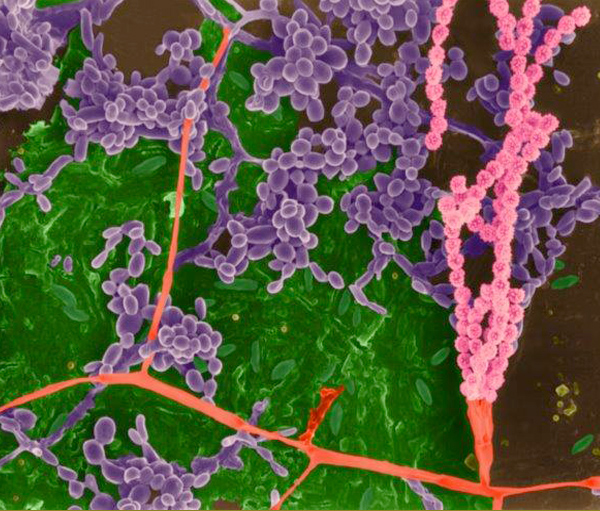
© Dennis Kunkel Microscopy
Home Resources Pathogens Bovine Spongiform Encephalopathy (BSE) - "Mad Cow Disease"
Bovine Spongiform Encephalopathy (BSE) - "Mad Cow Disease"

© Dennis Kunkel Microscopy
Human variant of the disease: CJD - Creutzfeldt-Jakob Disease
What is BSE?
Bovine Spongiform Encephalopathy (BSE), more commonly known as Mad Cow Disease, is a slowly progressive, degenerative, fatal disease affecting the central nervous system of adult cattle. BSE is one disease within a larger group of related neurodegenerative disorders in animals, Transmissible Spongiform Encephalopathy (TSE).
What is TSE?
TSE is a family of similar neurodegenerative diseases that may infect certain species of animals and people such as Scrapie in sheep and goats; BSE in cattle, chronic wasting disease (CWD) in deer and elk, and variant Creutzfeldt-Jakob disease (vCJD) in humans. The infective agent of TSE is a prion.
What causes BSE?
The exact cause of BSE is not known but is postulated to be a prion, an infectious protein. Prions are found in animals that cause BSE. In cattle with BSE, prions are initially located in the small intestine and tonsils; in later stages of disease, prions are typically found in central nervous tissues, such as the brain and spinal cord.
How did BSE first develop in cattle?
Cattle were first infected by prions when scrapie-infected sheep were fed to healthy cattle in the form of a Meat and Bone Meal (MBM). The disease manifested in cattle as BSE. More cattle were affected with BSE when cattle MBM containing BSE prions was fed to healthy calves.
What is a Meat and Bone Meal (MBM)?
Meat and bone meal is the dried and rendered product from animal tissues. MBM usually consists of meat trimmings, inedible parts and organs, fetuses, and certain condemned carcasses. They are cooked to produce a nutritional and economical feed ingredient. MBMs are not supposed to contain horn, hair, hide trimmings, manure, stomach contents, added blood meal or poultry by-products.
What is a Specified Risk Material (SRM)?
Specified risk materials (SRM) are tissues in BSE-infected cattle that contain the agent that may transmit the disease. In cattle the following tissues have been defined as SRMs:
- All ages- The tonsils, the entire small and large intestine including the rectum, and the mesentery (connective tissue surrounding and supporting the intestines).
- Over 12 months - Skull, excluding the mandible and including the brain and eyes; and spinal cord.
What is the current status of BSE affected cows in the US?
Currently there is one cow affected with BSE that was identified by the USDA in December 2003. The cow was brought from a farm in Canada.
Contact EHA Consulting Group today for more information about how we can assist your company.